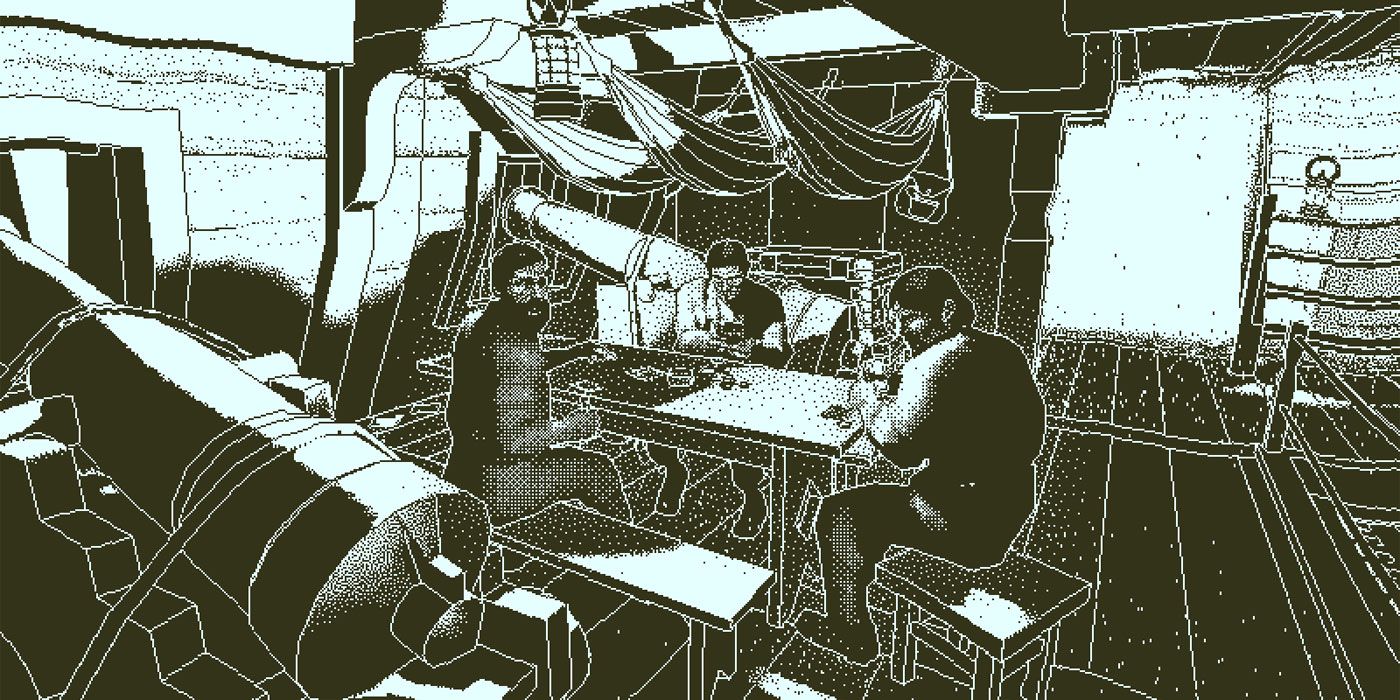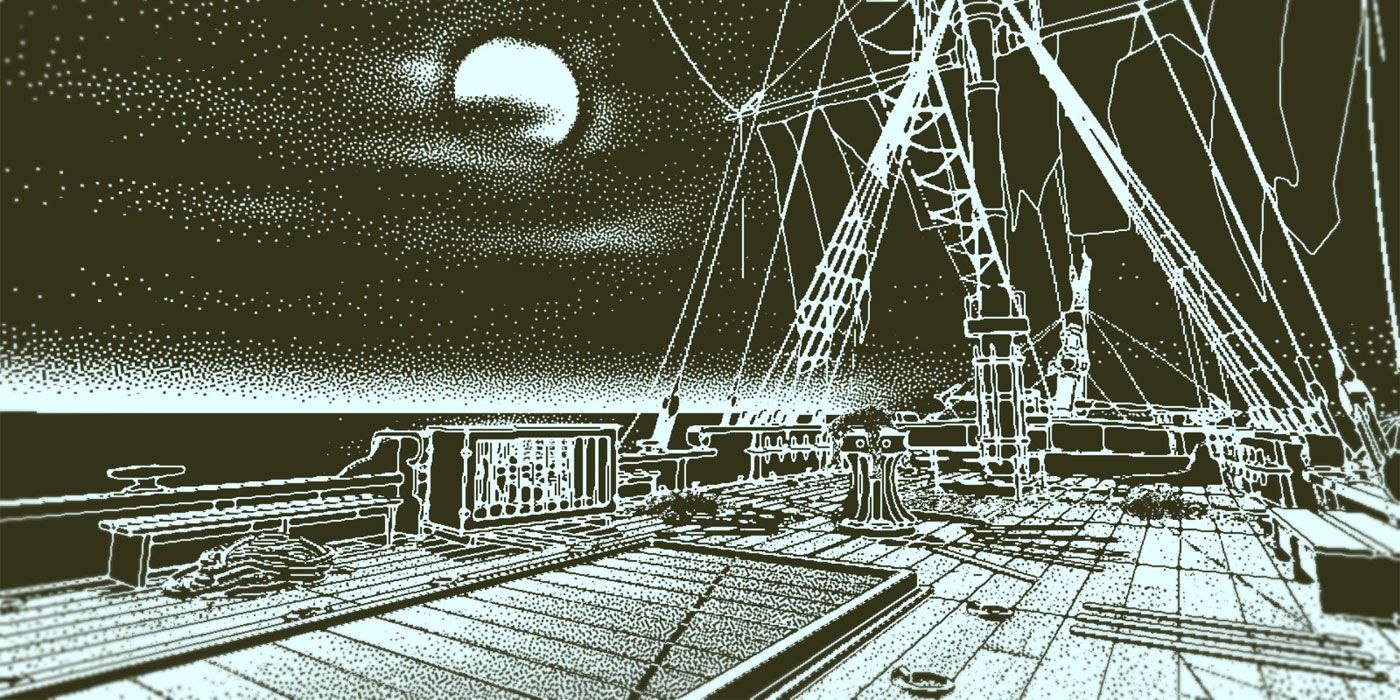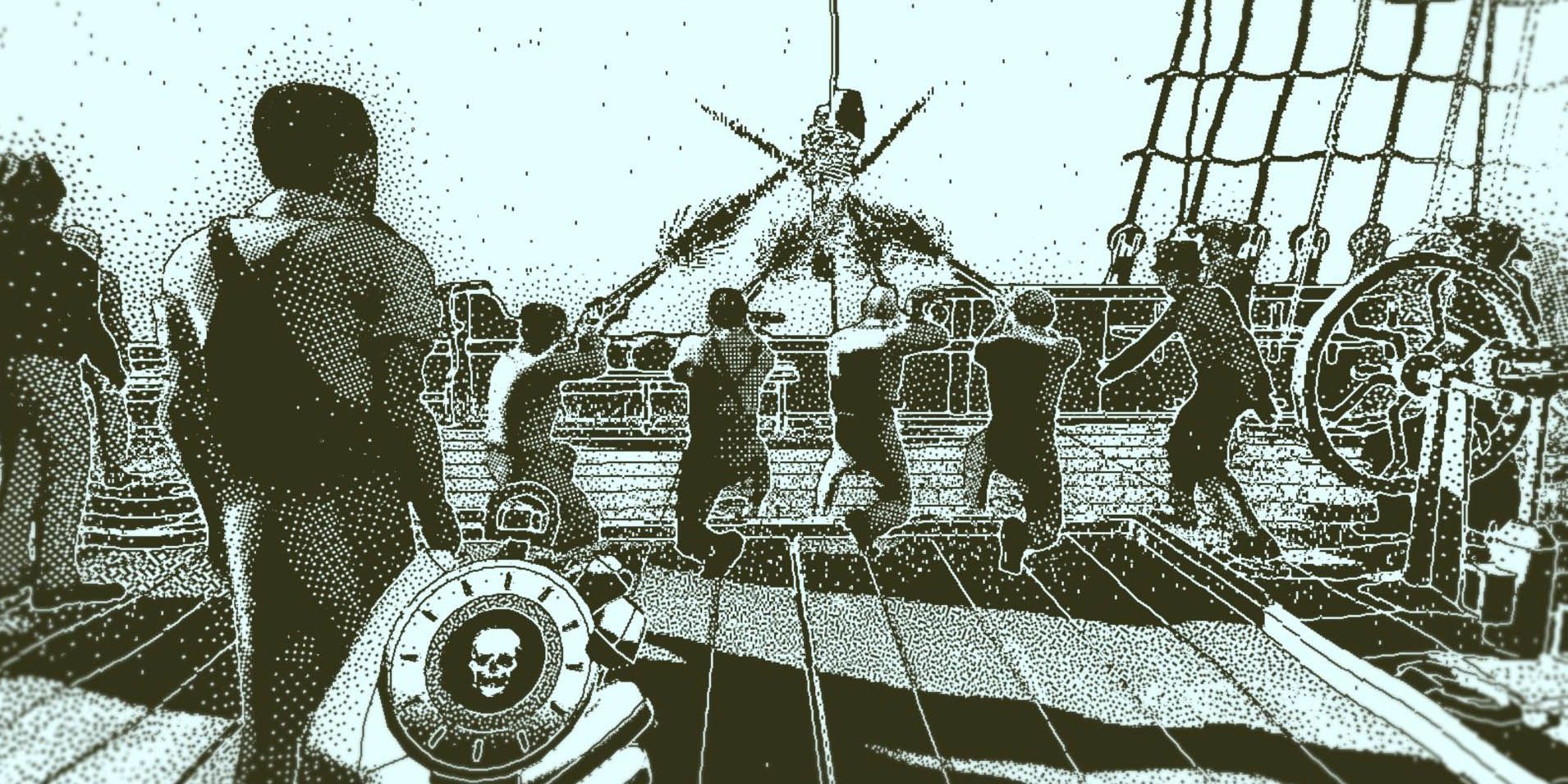Lucas Pope's phenomenal game Papers, Please took the indie scene by storm back during 2013. The experimental immigration office simulator ended up being a surprisingly enjoyable game. The authoritarian dystopian setting, the heart-wrenching dilemmas, and adrenaline-pumping time crunch all led to a gaming experience unlike any other.
And while few other games may be anything like Papers, Please, there is one other game with a similar approach to game design and philosophy: Lucas Pope's next work, Return of the Obra Dinn. Return of the Obra Dinn is a puzzle game released in 2018 where you play as an insurance adjuster, which is almost as out there as playing an immigration officer, given the task to investigate the mysteriously returned merchant vessel, the Obra Dinn.
Return of the Obra Dinn gives you a straightforward task: figure out the identity and fates of all the missing crew members. Using the memento mori, a game mechanic that allows players to see a freeze-frame of the exact moment of death of a corpse, players have to figure out what happened aboard the mysterious ghost ship through pure deductive reasoning. Where most other such games would provide choice options for what to do next, Obra Dinn gives players full freedom within the ship and allows them to figure it all out themselves. It is possible to finish the game without having correctly named any of the corpses of the deceased crew members or to finish it with all of the names correctly noted, and the "story" existing and making sense entirely within the heads of the players.
Here's an example of how the gameplay works: imagine a corpse wearing the uniform of a midshipman. The face happens to be unclear in the memento mori flashback, so players fail to identify the man immediately. Later on, the players may discover the identity of two other midshipmen. Since the ship only had three midshipmen, the unnamed corpse must be the third man by process of elimination. Alternatively, one may notice the man had an Irish accent in the flashback dialogues, and there being only one Irishman in the ship's crew roll book. These are non-spoiler examples, but the game itself is scattered with hints of a similar nature, with multiple of them acting as alternative clues to the same mystery.
When the players figure out the identity and the means of death of a crew member, they'll have to jot the information down in their journal. Here, the game employs a clever mechanic where the player has a limited set of options of names plus deaths to choose from, which is referred to as "a fate." Instead of the game immediately letting players know if their choice is correct, it waits for them to get the identity and fate of three crew members right before revealing it to be correct. This prevents players from brute-forcing their way by guessing all the options, as the sheer amount of possible combinations are overwhelmingly too many to be guessed. Whereas in other such games, players can just try all options until they get the correct one by luck. In Return of the Obra Dinn, there is no luck, player hand-holding, or in-game cutscenes and dialogue options. Everything is left up to the players, and this makes for a great experience where players can feel like a true detective.
The similarities to Papers, Please don't just lie in the game design philosophy of minimal meta interference, but also the way the two games approach storytelling. In both, the story of the game takes place within the gameplay and not by any cutscenes. In Papers, Please, the story depends on the gameplay decisions a player makes, with dialogues and consequences triggered by those decisions. In Obra Dinn, the story is told within the player's mind, as they make sense of what's happening through logical deductions.
Another similarity to Papers, Please is the art-style, with both games utilizing interesting graphics choices. Papers, Please, instead of going for the traditional 3D rendered models, went for a charming but at the same time "ugly" pixel art, which immensely adds to the bleak feel of the dystopian world. Return of the Obra Dinn similarly uses pixel art, but this time being in 1-bit monochromatic graphics inspired by the early Macintosh computers. This unique choice of art style, coupled with fantastic voice acting and score, makes for a truly engaging experience, similar to the experimental and endearing quirkiness of Papers, Please.



